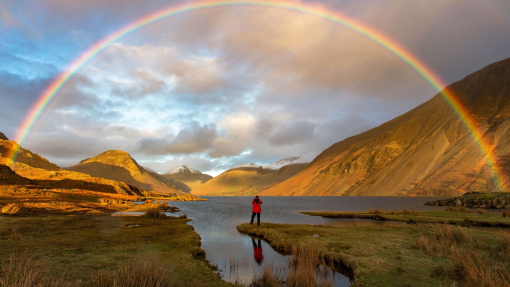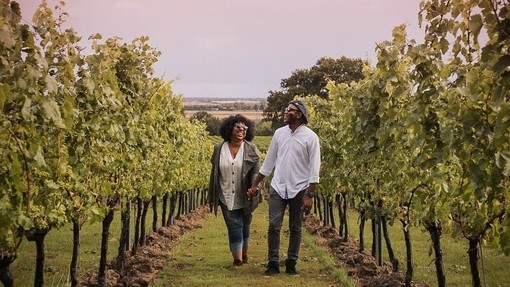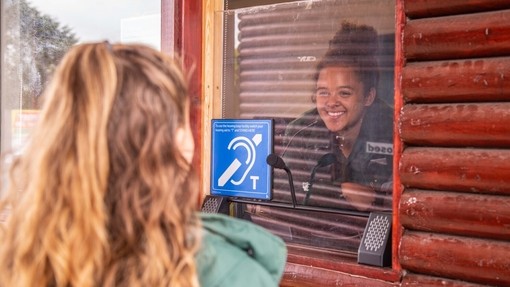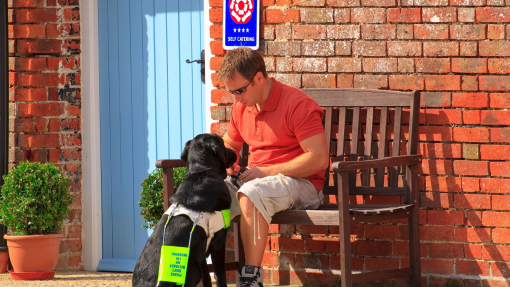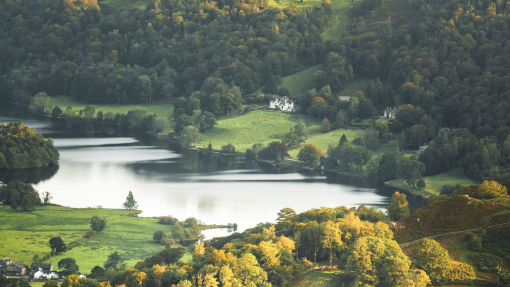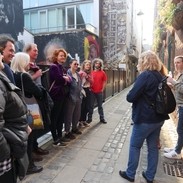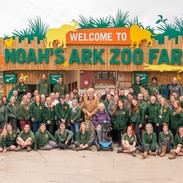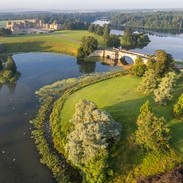Find training

VisitEngland Academy Courses
The VisitEngland Academy Learning Portal is designed to equip small- medium tourism businesses and tourism industry partners with the tools and skills they need to grow their businesses. These are self-directed e-learning courses that deliver high-quality advice and support.
Create your account today!
Courses Catalogue
Taking England to the World
This course delivers the skills and knowledge tourism businesses in England need to reach new international customers. Find out about preparing to work with the travel trade, get actionable insights and analysis about key markets and guidance on marketing, product development, distribution and partnerships. Sign up and get your business “international ready.”
Find out more or visit the VisitEngland Academy to sign up now.

Taking England’s Wine Tourism to the World
Supported by WineGB, this programme is tailored specifically for English vineyards and wineries with an existing tourism offering but who are looking to develop vineyard experiences that appeal to the lucrative and growing inbound tourism market. This course provides greater understanding of both volume and value of inbound tourism, of the tourism distribution system and how to promote tourism products effectively.
Find out more or visit the VisitEngland Academy to sign up now.

Welcoming LGBTQIA+ Customers
Develop your awareness of the LGBTQIA+ tourism market, worth £7.1 billion to domestic tourism alone, and get practical guidance to make your business more inclusive with our e-learning course.
Find out more or visit the VisitEngland Academy to sign up now.

Exploring VisitEngland’s Accessible and Inclusive Tourism Toolkit for Businesses
This top-level introduction to the VisitEngland Accessible and Inclusive Tourism Toolkit for Businesses will help you focus on the sections most relevant to your business, no matter where you are on your accessibility journey. A series of short videos will give you an overview of each of the toolkit section which cover such topics as barriers faced by customers with different impairments, effectively promoting your accessibility information, become an inclusive employer and more.
Visit the VisitEngland Academy to sign up now.

Unlocking GCC Market Potential: Welcoming Growth
The UK is a prime destination for GCC visitors, who are drawn to its rich cultural experiences, diverse food and drink offerings, and world-class shopping. This short course will equip you with the insights and practical tools needed to tap into this lucrative market. Learn how to tailor your products to GCC travellers’ preferences and ensure they feel warmly welcomed in your region.
Visit the VisitEngland Academy to sign up now.

VisitEngland guides and toolkits
Regenerative Tourism
This guide takes you, step by step, on a journey to a better, more sustainable business. It offers background on sustainability issues, practical tips you can take action on right away and includes helpful worksheets to get yourself organised.
Find out why regenerative tourism is more important than ever and what role your business can play in taking care of the planet, your people and your community.

Marketing & Promotions
Learn how digital marketing can help even the smallest tourism business reach a global audience with our toolkit of resources.
Learn the basics of getting publicity with our free public relations guide. Our PR toolkit provides ideas on how to secure media coverage and publicity.
Marketing your business inclusively means having an accessible website and social media presence - and here you’ll find digital accessibility hints and tips.
You may already be working sustainably but this guide shows you how to communicate and market those sustainability efforts.
Accessibility & Inclusion
Accessible and Inclusive Tourism Toolkit for Businesses
Accessible tourism helps businesses tap into under-served and growing markets, differing customer groups and local communities. Wherever you are in your accessibility journey, however new or well-established your business is − this toolkit offers you practical hints, tips, and the reassurance and confidence, to move forward inclusively. Our free e-learning course on the VisitEngland Academy can help you explore the toolkit in more detail.

Expanding Markets
Taking England to the World toolkit
A practical guide for tourism SMEs – and accompanies our free Taking England to the World training course. From pricing guidance to targeted marketing plans, it guides you through developing and promoting your business in international markets.
Taking England’s Wine Tourism to the World toolkit
This guide, based on our Taking England’s Wine Tourism to the World course, is designed to provide you with the tools, knowledge and contacts needed to build your wine tourism offering and enter it into the tourism export market.
Explore upcoming international market events offered by VisitBritain. These opportunities - including global business events conventions and overseas trade missions - help organisations target international leisure and business events sectors.
Keep informed about Britain’s key inbound demographics with these webinars where specialists share insights on what’s happening in the region from consumer and trade perspectives as well as upcoming activities and opportunities.
Crisis Management
If your business has been impacted by floods, this is where to find information and advice to help you get back on your feet.
The toolkit includes a step-by step process for assessing the situation, dealing with cancellations, communicating with customers - and finally what to do when things finally return to normal.

3rd party links intro
Below are links to further training and support resources we believe could be helpful for those working in the visitor economy. These are not VisitEngland-run courses and links will take you to external websites.
Digital skills training
Upgrade your digital skills with training and resources related to everything from cyber-security to Excel, from Google to making the right software decisions.

Customer service training
Welcome to Excellence customer service courses
Take a look at the suite of high-impact, nationally-available training courses from Welcome to Excellence, covering a range of customer service topics.
World Host customer service training
Start offering high-quality and consistent customer service with this innovative, interactive World Host training programme provided by People 1st International.
Exceeding Visitor Expectations training course
This course, designed for visitor attractions, combines the expertise of VisitEngland’s Visitor Attraction Quality Scheme and the experience of the Welcome to Excellence training programmes.
Hospitality training
Hospitality resources from HIT Training
Browse training resources available from HIT Training, covering topics such as management and food and beverage.
National Hospitality Academy online courses
Discover more than 70 online hospitality courses covering everything from food hygiene to social media training.
Access free training courses from Springboard, from job-seeking skills, to hospitality-accredited qualifications.
Tour guiding
Find the training courses running around the country from the Institute of Tourist Guiding. Check back regularly for upcoming courses.
British Guild of Tourist Guides
The British Guild of Tourist Guides, membership organisation for Blue and Green Badge Tourist Guides, runs training courses in England.
Personal development and life skills
Find free online personal development courses through the National Careers Service, including anything from developing an interest to taking care of your mental well-being.
Accenture’s Skills to Succeed Academy
Get free and interactive training from Accenture to help you shape your career, get a job and build your skills.
Read free articles and advice from Barclays LifeSkills, on everything from starting a business to developing communication skills and building a network.
Government courses and training
Discover the free government courses available to help you and your staff learn new skills, from computer essentials to business and finance.
This government course for SMEs helps senior managers of small businesses increase their business performance, resilience and long-term growth.
Visit the Free courses for jobs page, which outlines how over-19s can apply for free courses for a Level 3 qualification and get the job they want.
Learn the importance of counter terrorism and security with Protect UK’s e-learning courses.
Find local support
Although most training programmes are nationwide, there are sometimes other suppliers who offer programmes at a local level. Your accredited Local Visitor Economy Partnership or Local Enterprise Partnership Growth Hub may be able to help connect you with training providers.
Local support finder
Enter your county into our quick tool to find advice and support specific to your local area.
Enter your county into our quick tool to find advice and support specific to your local area.


